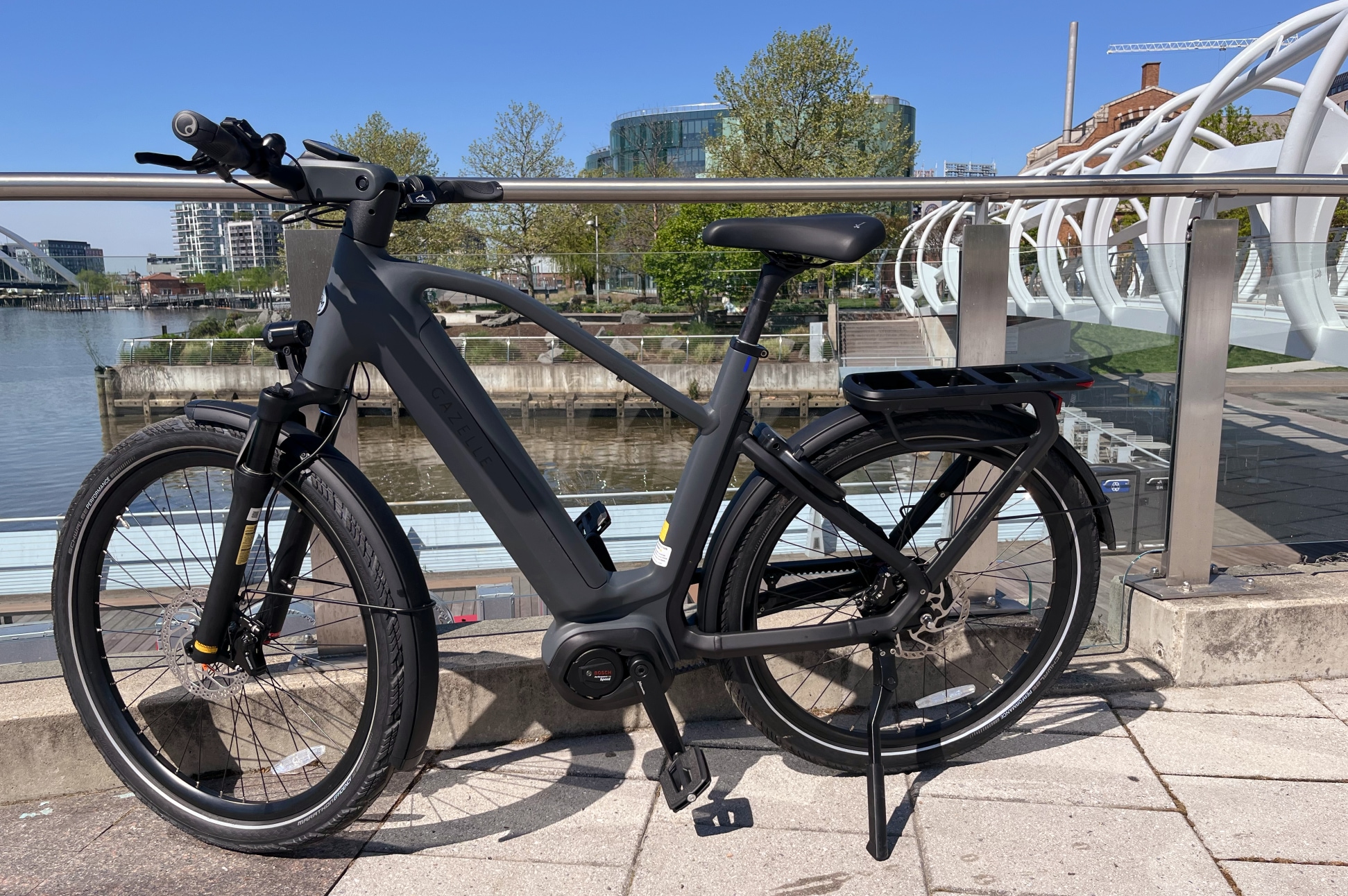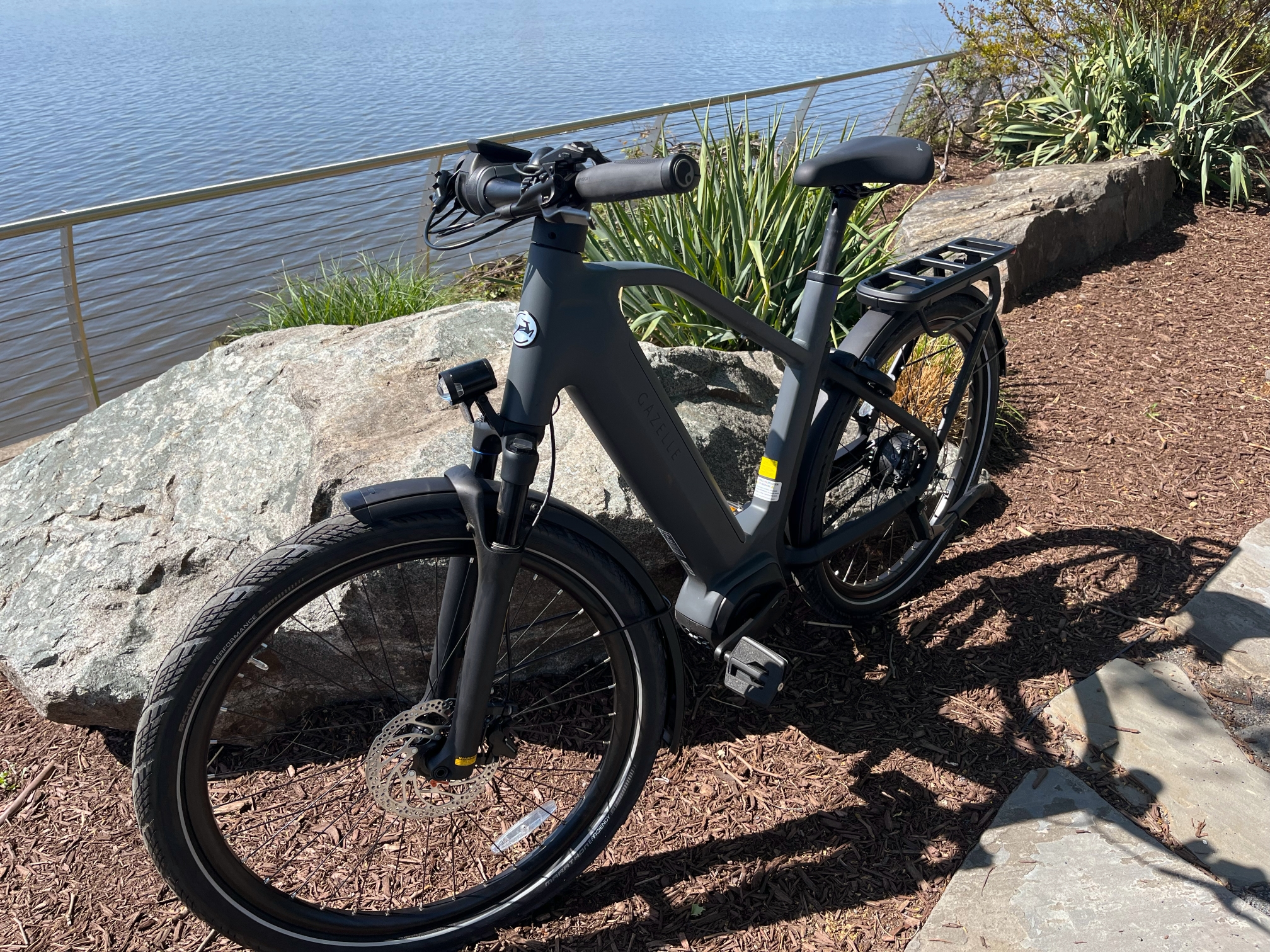Let me get three negative points about the Gazelle Eclipse out of the way first. First, it’s a 62-pound e-bike, so it’s tough to get moving without its battery. Second, its rack is a thick, non-standard size, so you might need new bags for it. Third—and this is the big one—with its $6,000 suggested retail price, it's expensive, and you will probably feel nervous about locking it anywhere you don’t completely trust.
Apart from those issues, though, this e-bike is great fun. When I rode the Eclipse (the C380+ HMB version of it), I felt like Batman on a day off, or maybe Bruce Wayne doing reconnaissance as a bike enthusiast. The matte gray color, the black hardware, and the understated but impressively advanced tech certainly helped. But I felt prepared to handle anything that was thrown at me without having to think about it much. Brutally steep hills, poorly maintained gravel paths, curbs, stop lights, or friends trying to outrun me on their light road bikes—the Eclipse was ready.
It assists up to 28 miles per hour (i.e., Class 3) and provides up to 85 Nm of torque, and the front suspension absorbs shocks without shaking your grip confidence. It has integrated lights, the display can show you navigation while your phone is tucked away, and the automatic assist changing option balances your mechanical and battery levels, leaving you to just pedal and look.

What kind of bike is this? A fun one.
The Eclipse comes in two main variants, the 11-speed, chain-and-derailleur model T11+ HMB and the stepless Enviolo hub and Gates Carbon belt-based C380+ HMB. Both come in three sizes (45, 50, and 55 cm), in one of two colors (Anthracite Grey, Thyme Green for the T11+, and Metallic Orange for the C380+), and with either a low-step or high-step version, the latter with a sloping top bar. Most e-bikes come in two sizes if you're lucky, typically "Medium" and "Large," and their suggested height spans are far too generous. The T11+ starts at $5,500 and the C380+ starts at $6,000.









 Loading comments...
Loading comments...
